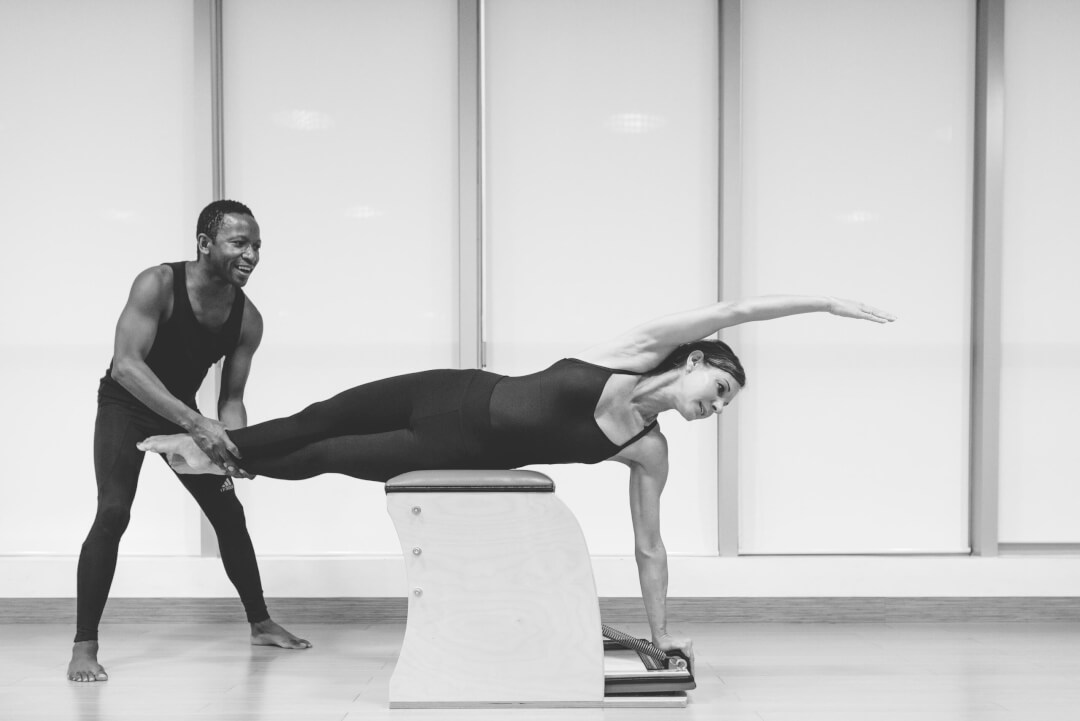
31 Oct Why You Need Functional Flexibility
Flexibility and mobility are like best friends with distinct personalities. When they’re completely in sync, the body becomes stronger and more fluid in movement. Luckily, Pilates offers a unique complementary fusion of the two.
But first, to define flexibility: UC Davis Health says flexibility is the ability of a joint or series of joints to move through an unrestricted, pain free range of motion. Although flexibility varies widely from person to person, minimum ranges are necessary for maintaining joint and total body health.
Secondly, mobility: Harvard Health says mobility is your ability to move purposefully as you go through your day. It is the foundation for living a healthy and independent life. Mobility comprises all the skills required for everyday living: physical stamina, strength, balance, coordination, and range of motion.
At Flex, we call it functional flexibility, which is mobility combined with stability.
“The Pilates Tower – unique to Flex in Hong Kong – is a perfect of example of how to achieve this,” says Flex co-founder Heather Thomas.
Heavy spring resistance can assist to stretch muscles and stabilize joints through proper Powerhouse core activation, she adds. Working with springs allows for unilateral movements (one arm or leg) thus gaining feedback on strength and stability, which can then be equalized
“We (Classical Pilates instructors) have a matrix through which we evaluate a client’s needs: Stability/Strength/Stretch and Stamina.”
The first thing a client needs to establish is pelvic, spinal and shoulder stability. Without these, it’s impossible to properly strengthen. The client can’t develop strength around an unstable joint.
This is followed by strength and stretch, and finally, we challenge the client’s stamina with more, or faster repetitions.
“The Tower allows us to work on all the “S’s” for optimal performance, which means clients have longer, leaner muscles which don’t fatigue and use less energy. This is known as eccentric muscle strength.”
There are a number of attachments on the Tower which multitask – the Rollback Bar, Arm/Leg Springs, and the Push-Through Bar. Additionally, clients can work lying down, kneeling and standing/squatting, replicating functional movement patterns and catering to all levels.
There is also the wonderful Wunda Chair, which also aids functional stability, strength and stamina.
“The Wunda Chair is a little workhouse, which we often integrate into Trios,” says Heather. “The Wunda’s unstable surface and movement vector makes it perfect to challenge ankle, knee and hip range of motion, as well as symmetry of balance.”
Ultimately, Pilates is smooth transitions between precise and controlled movements. It’s not just stretching after a strengthening exercise, as most Pilates exercises combine the two.
Add in the superior equipment at Flex, and this symmetry further enhances strength, flexibility, and mobility.
“You work hard with Pilates, but you work smart. Correctly performed Pilates exercises are designed to stay with you for the rest of your life, and our instructors are specifically trained to ensure each and every client reaches a greater self-awareness of their functional stability.”
Tried our Pilates Group Trios yet?
View Reformer Quartet schedule
or Book Here

